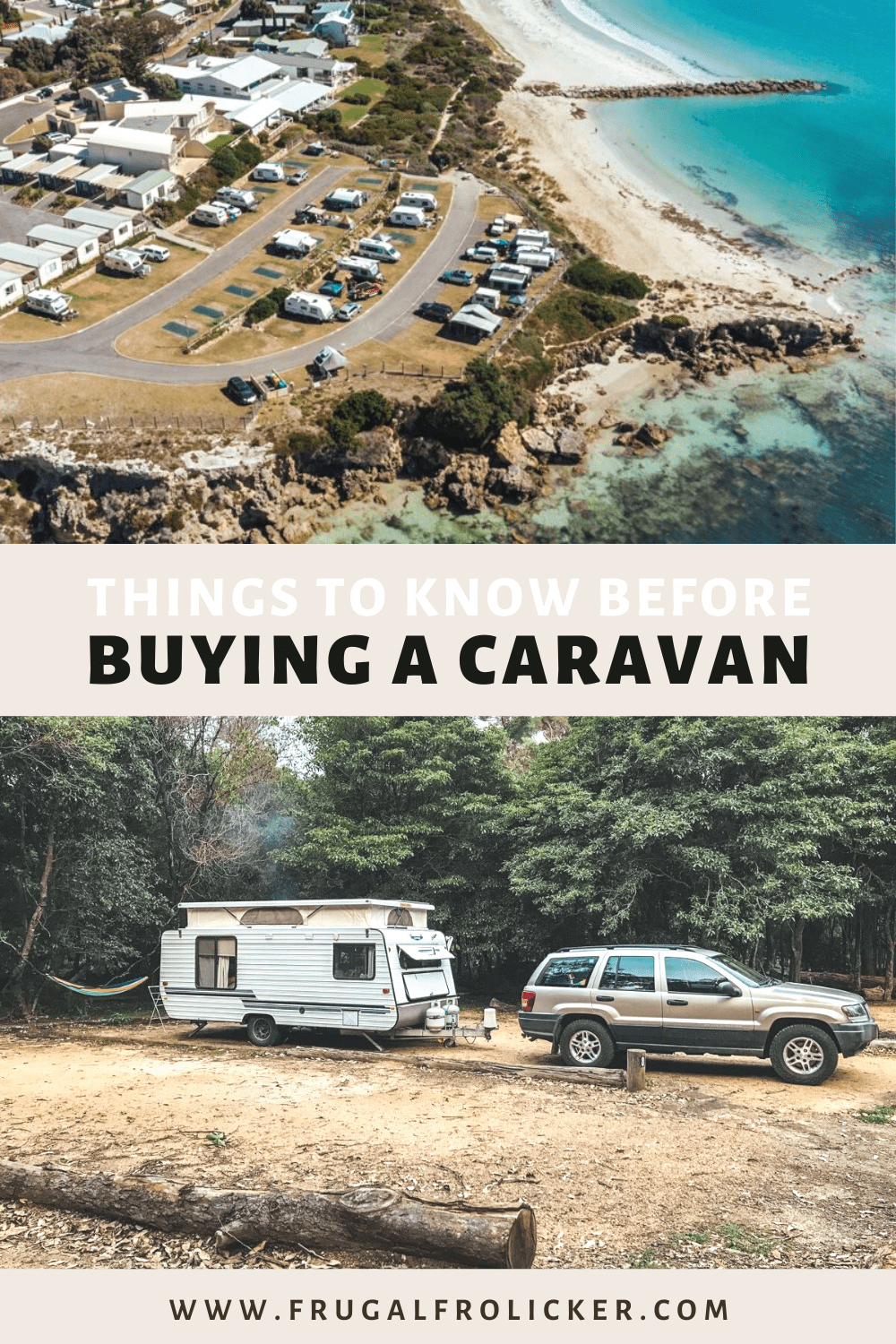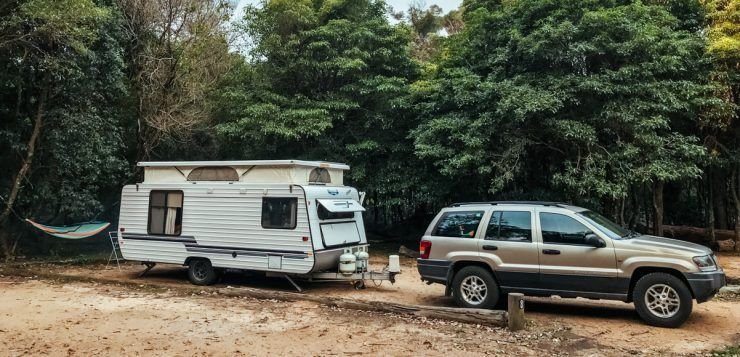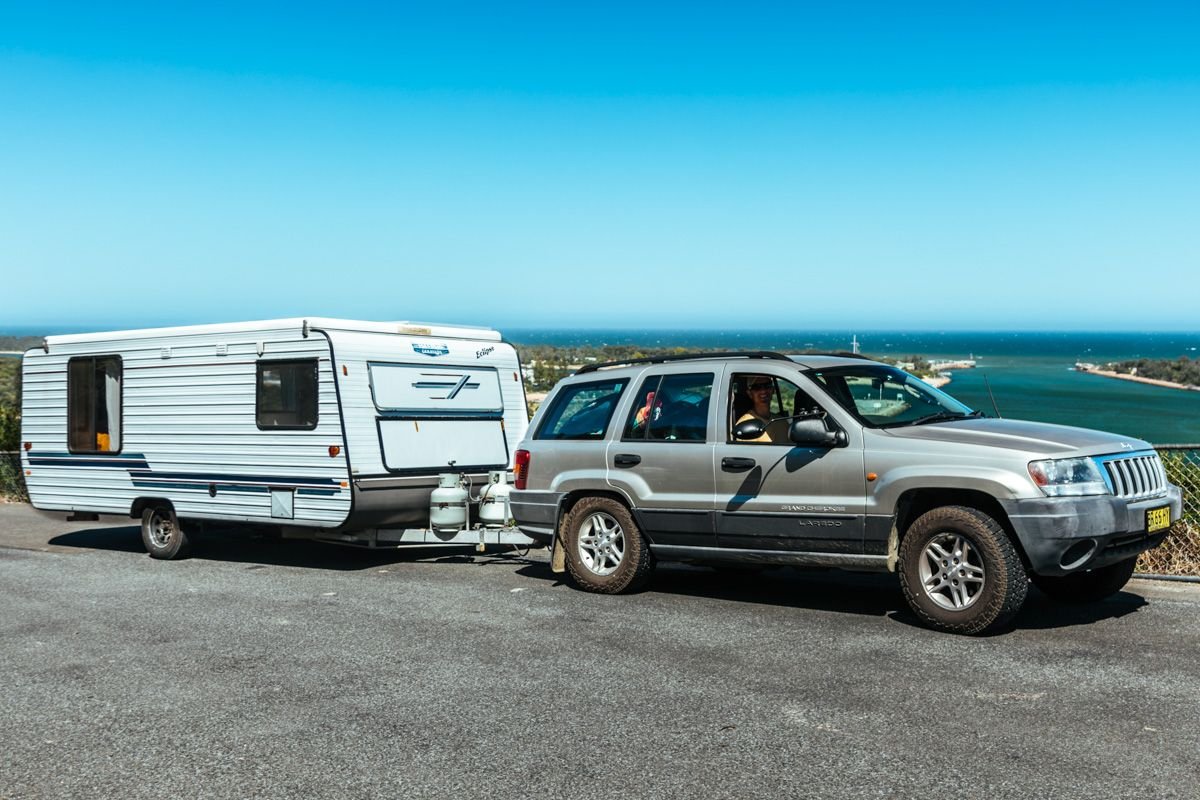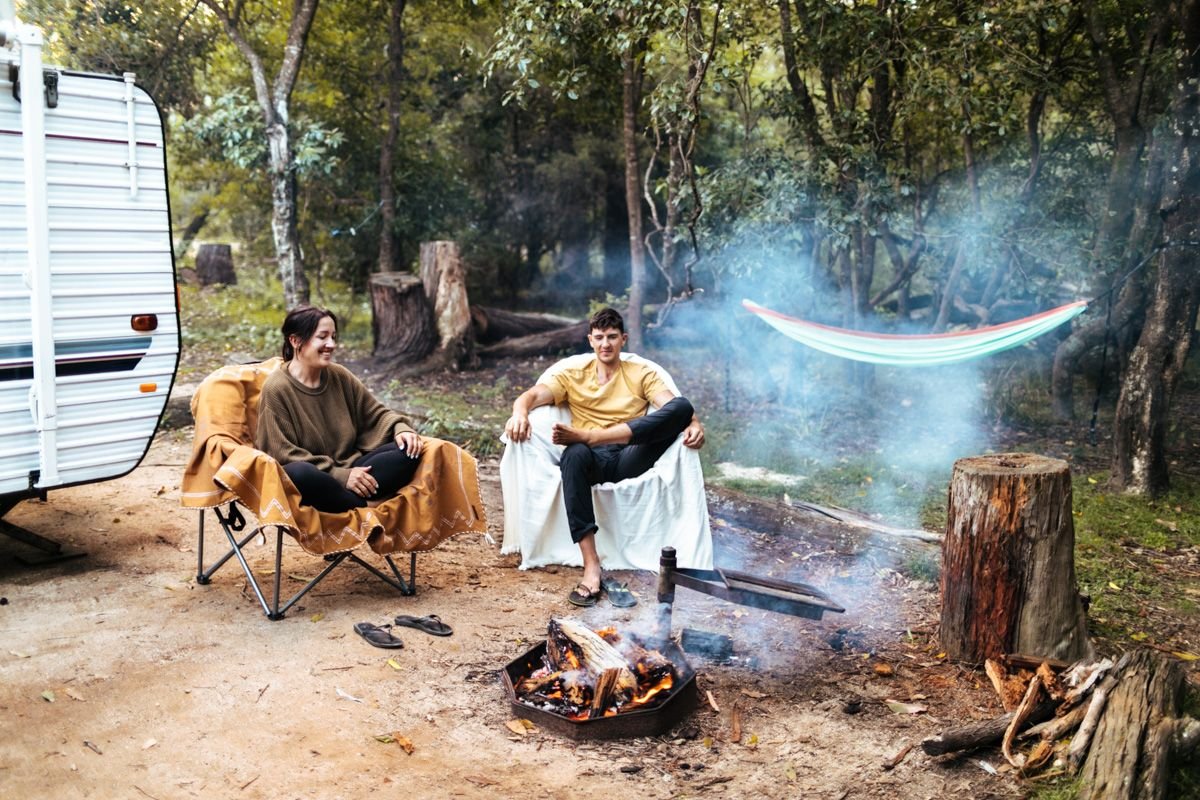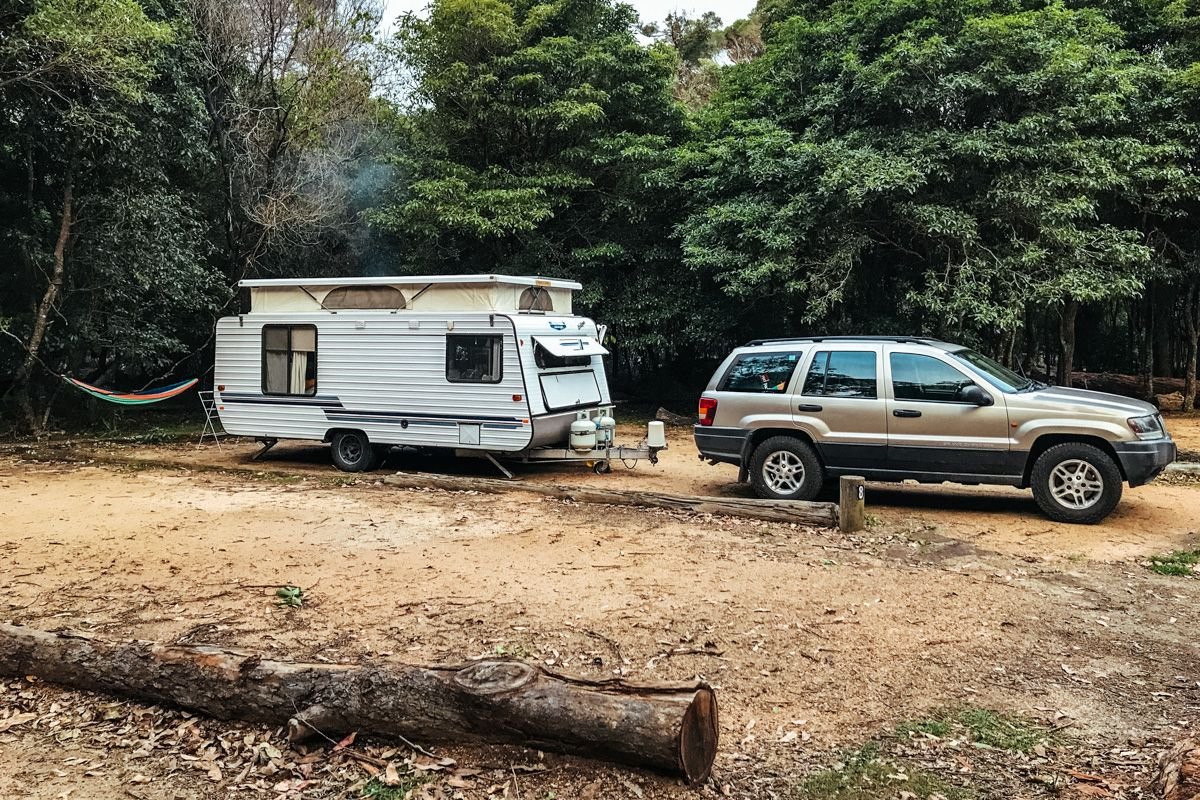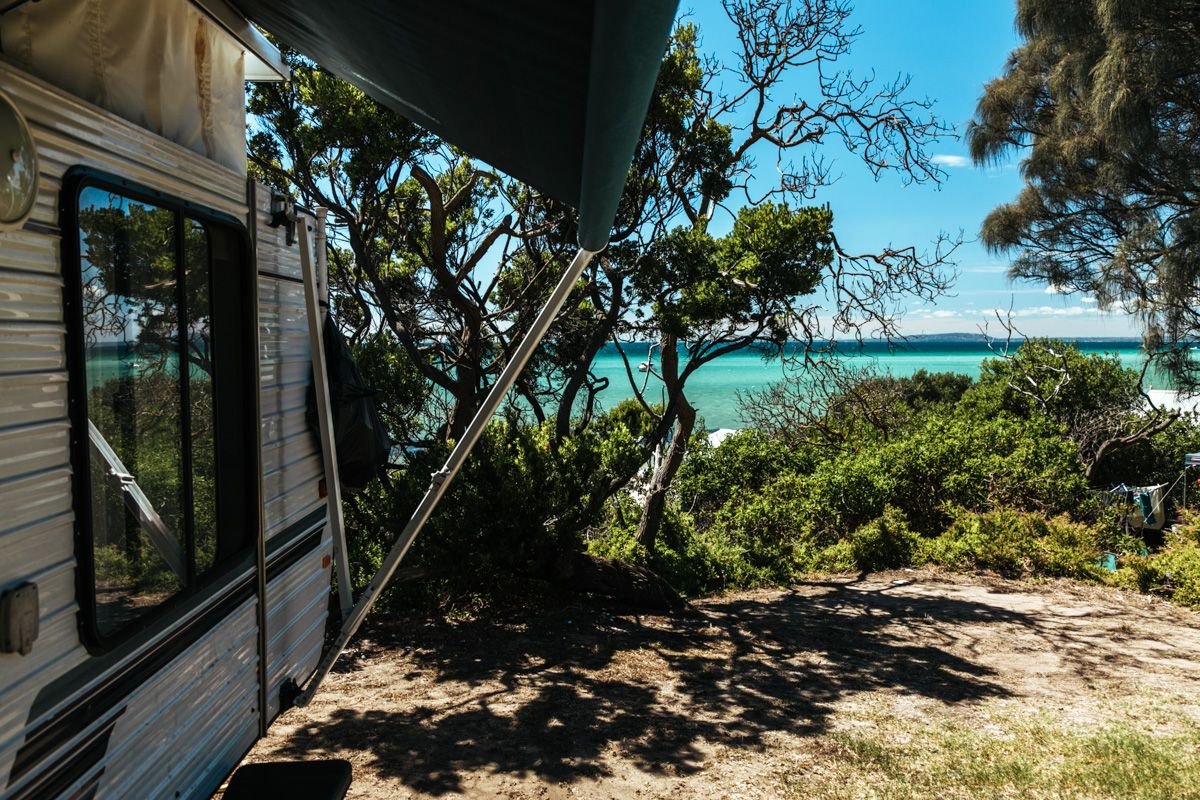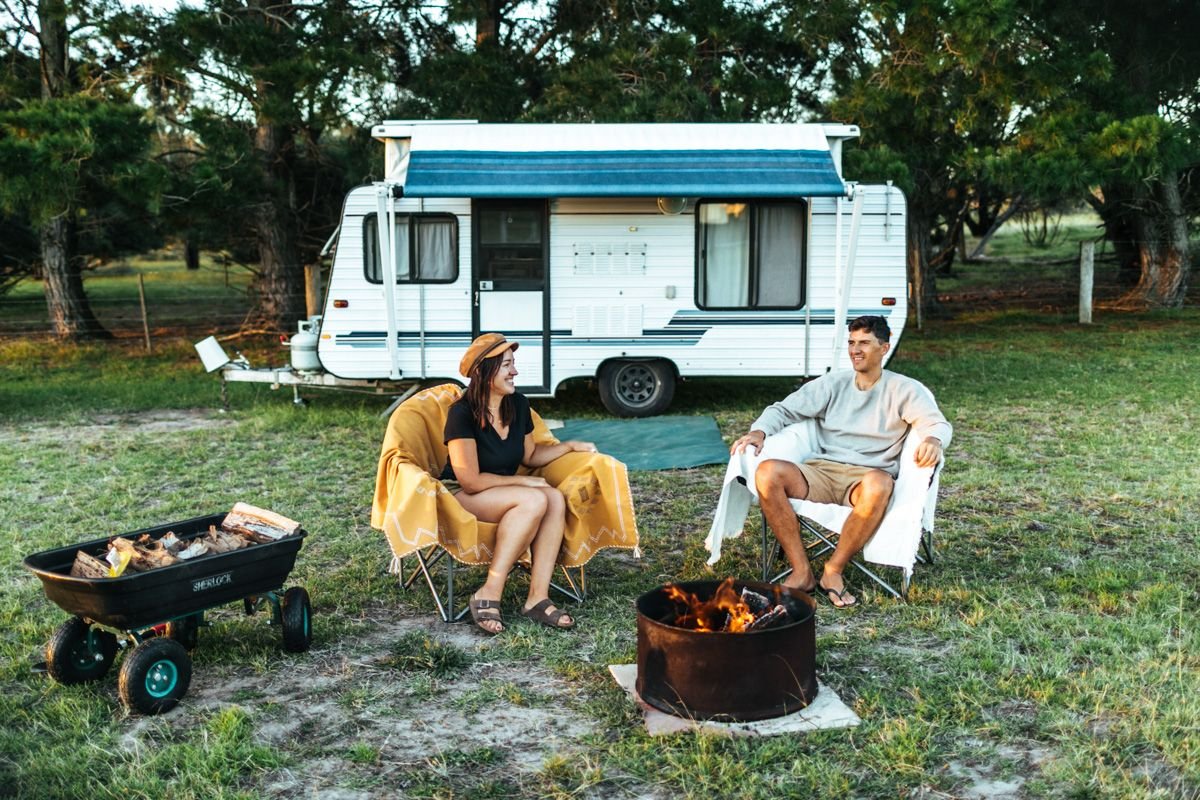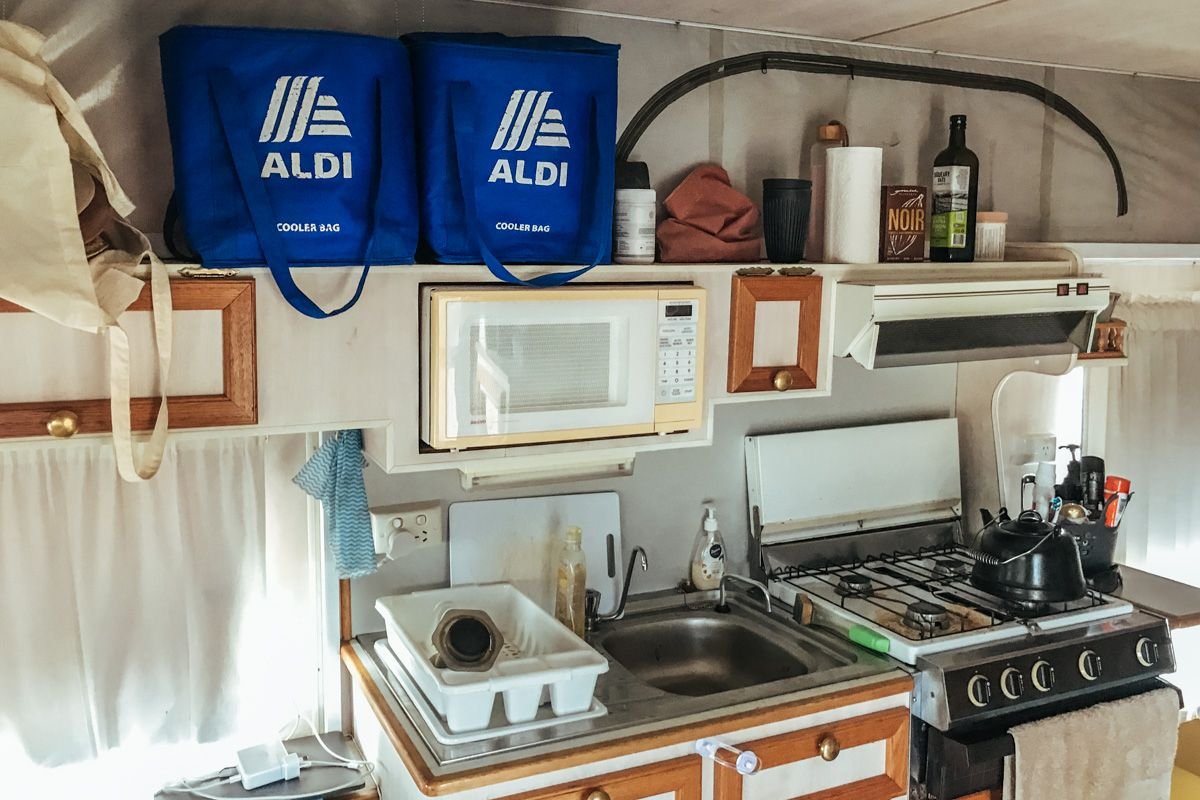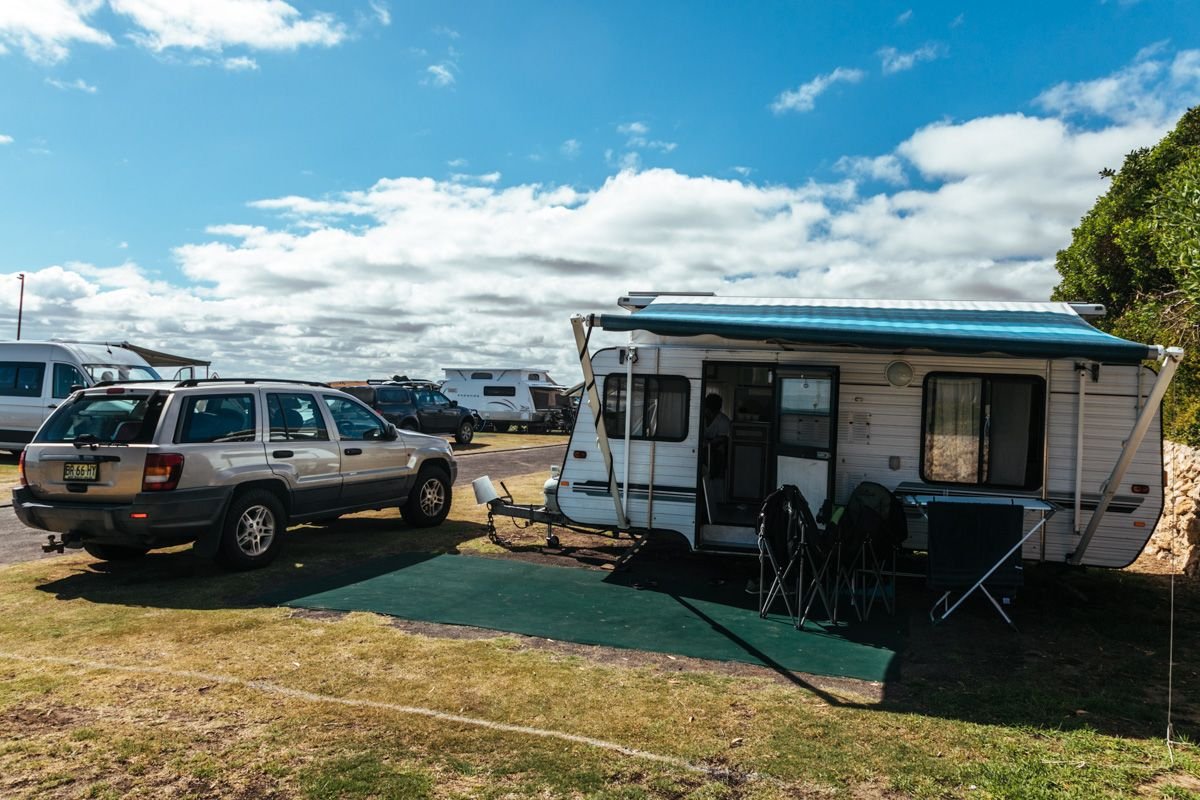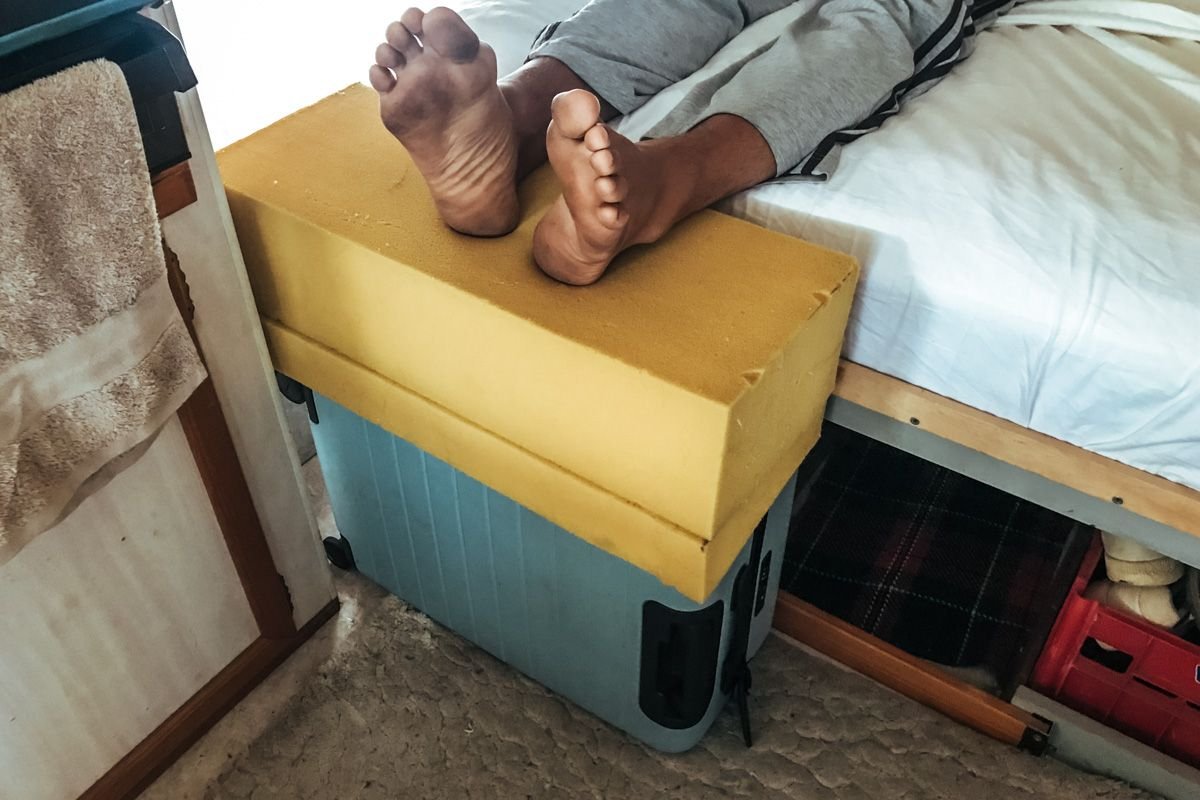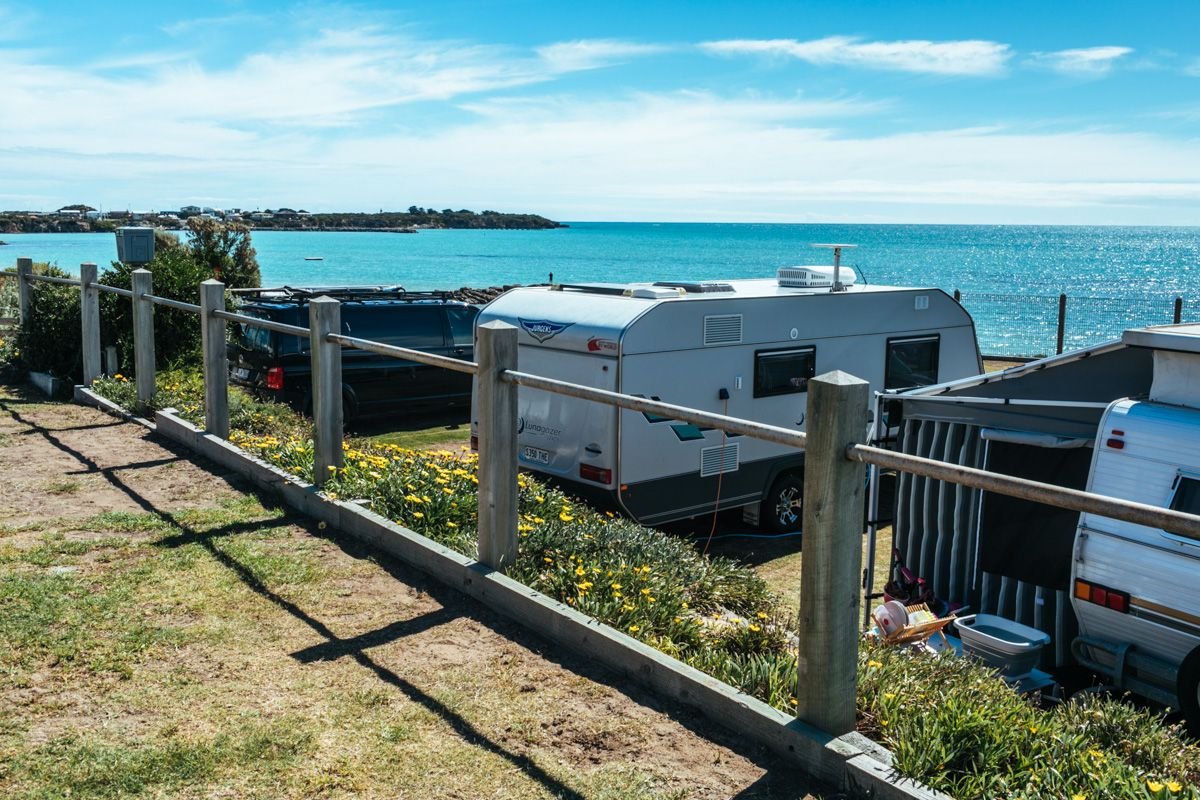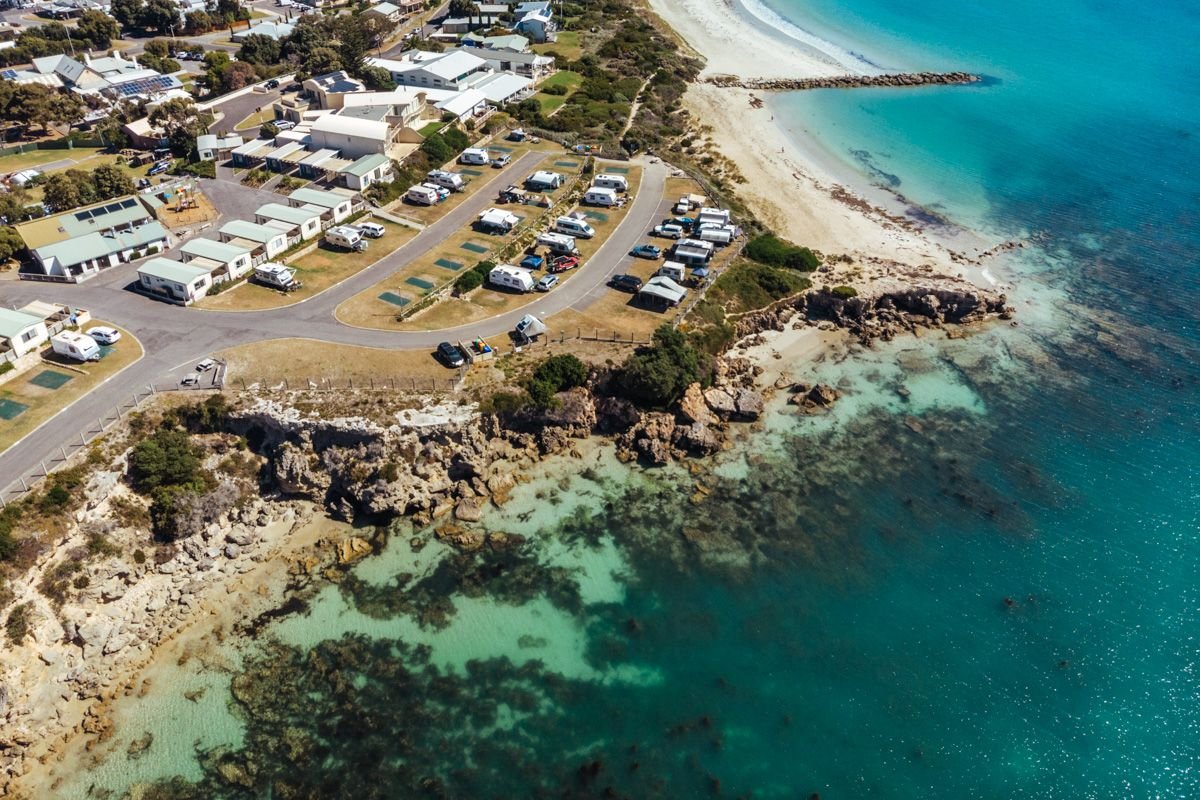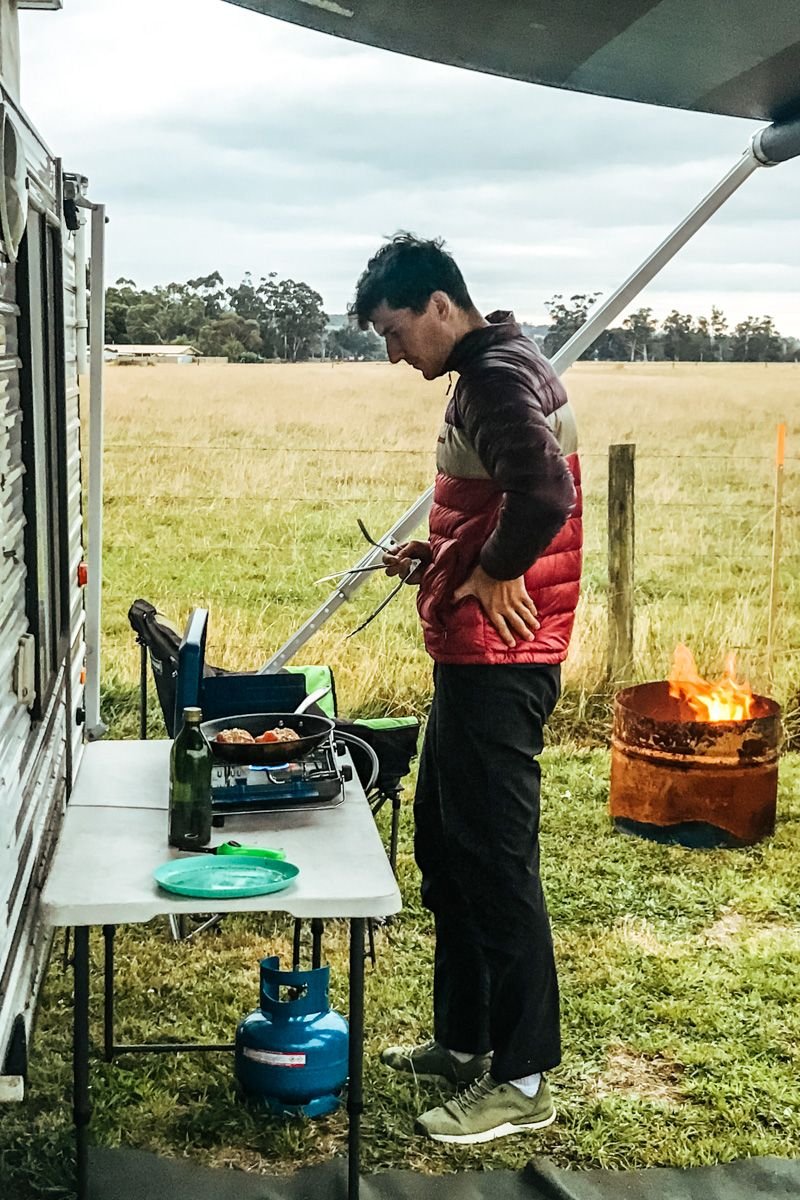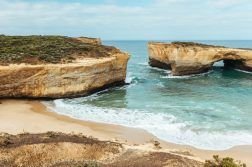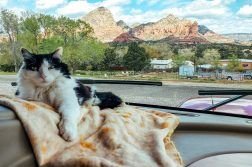This post was last updated on 2021 May 8
As of now, I’ve been caravanning around Australia for 3 months. That’s 90 straight days of calling a tiny metal box home and towing it halfway across the country, something I NEVER envisioned myself doing – yet here we are!
Admittedly we jumped into it pretty blindly; it was only when we bought the caravan that reality began to sink in and we realized what we were getting ourselves into. Of course it all worked out (it always does!), but man – the early days of caravan ownership were such a shock to the system.
If you’re thinking about buying a caravan or planning to road trip and live in some sort of vehicle long-term, listen up! In this post, I’m sharing all of the things I wish I knew before buying a caravan – things that would have mentally prepared me for this huge endeavor or possibly even changed my mind about the caravan I ended up buying!
You Have To Learn How To Tow
Hello, Captain Obvious! That caravan aint gonna drive itself, which means you’ll need to tow it.
If you’ve never towed before, it takes some getting used to. I’d highly recommend signing up for a training course to learn how to do it properly (or learning from someone who has experience towing a caravan). We did ours through Tow-Ed and it was well worth the investment just for the peace of mind it gave us.
And if you think you can just hitch up the van and drive with no practice, well… just wait until it’s time to back into a campsite. One thing that still trips me out is that you have to turn the steering wheel in the opposite direction as you normally would to reverse park. Definitely something you’ll want to learn and practice beforehand!
You Need A Capable Towing Vehicle
Before you go and buy a caravan, you need to ensure that your towing vehicle can handle the weight of it.
Each car has a towing capacity, so make sure you check that first to confirm that it is capable of towing the caravan plus all of your belongings inside of it.
Next (and this is where we went wrong), you’ll want to have a powerful-enough towing vehicle… else it’ll be a struggle towing uphill. We’re towing with a 2004 Jeep Grand Cherokee Laredo, which we thought would be more than fine given its towing capacity and the fact that it’s got 4WD. WELLLLLLLL it’s not, because we ended up breaking down while towing the caravan up a mountain (on a very hot day) – the car overheated and blew the radiator.
What we didn’t look at was the engine: our Jeep has a 6 cylinder engine (aka a v6), which my mechanic dad says would suffice for towing a pop-up camper, but would likely be strained towing anything larger. A v8 would have been an optimal choice for towing a caravan. Another mechanic said that a car with a diesel engine would’ve been a good choice for towing as well. Oops!
And lastly, there are two modifications you’ll need to make to your car so that it can tow a caravan: 1). Install an electric brake controller (so you can brake the van while driving), and 2). Install an Anderson plug (to keep the fridge running and the battery charged as you drive).
Towing A Caravan = Double The Vehicle Expenses
This one’s kind of another DUH, but seriously: be prepared to spend twice as much on running and maintaining your vehicles when you add a caravan to the fleet.
You’ll spend twice as much money on gas/petrol and tolls while towing. You’ll also need to pay for registration and insurance on both your car and your caravan.
The added expenses are inevitable, so it’s better to anticipate and accept them early on.
The To-Buy List Is Never Ending
We were warned about this very early on, and it didn’t take long for us to find it true: there will ALWAYS be more to buy to kit out your caravan the way you want it.
If you’re starting from scratch, there is a LOT of stuff you’ll need to buy to get your caravan ready for life on the road. Some of it is the obvious stuff, like camping gear and towing accessories… while other items are more random, like scissors, ropes, adhesives, storage containers, buckets, and tools.
Seriously, we purchased HUNDREDS of items in our first two months of caravan ownership. I lost track of how many Bunnings trips and snowys.com orders we made, but both were a weekly occurrence at minimum for awhile. It’s very much a Pandora’s Box situation: the more you buy, the more you think of to buy.
Again, just be aware of this going into it and you’ll be able to mentally prepare and budget for all your caravan accessories and expenses.
Pop-Top Caravans Have Limited Storage
To keep the weight of our caravan down, we decided early on to look for a pop-top caravan. Not to be confused with a pop-up camper, a pop-top caravan is essentially a regular caravan, but the upper 1.5 feet of it can be collapsed down while towing or not in use. Basically the upper part of the caravan is like a tent (it even has some windows you can unzip), which weighs significantly less than if it were made of metal like the rest of the van.
Set up and break down of the pop-top is quick and easy, and we’ve had absolutely no leakage or breakage while parked in torrential rain and heavy wind. And yes, it’s definitely nice having a slightly lighter/shorter van to tow and park.
But one serious downside to pop-top caravans is the limited storage space. In normal caravans, that upper 1.5 feet is mostly used for storage cabinets; in pop-top caravans, it’s just dead space. Some of it can be used as a shelf, depending on how things are set up.
As a result, our storage overflow has gone under our table and on top of the shelf that goes over our sink and stove, and our caravan looks cluttered and messy at all times. And I’m normally someone who keeps a clean and tidy home with nothing laying out in the open where it doesn’t belong, so you can probably understand how much this bothers me.
There’s also zero free wall space on which to hang things, like hooks, photos, or mirrors, all of which I really miss having at my convenience. I had to get a little crafty and ended up buying some adhesive mirror squares from Ikea, and tiled 3 of them on the door to one of our cabinets. Conveniently, this door opens out into our doorway, so we can stand outside and use it as a full length mirror.
If I were to go through the caravan buying process again, I’d definitely opt for a normal caravan instead, rather than a pop-top. A pop-top would be fine for sporadic use, but not for living on the road long term.
The Toilet Situation Is Rough
Whether your caravan is equipped with a toilet or not, I’d say the toilet situation is pretty rough.
I’m not sure which is worse: having to clean and dump your caravan toilet on the regular, or having to walk a fair distance to the camp toilet every time you need to pee?
To be honest, caravan toilets kind of gross me out so I’m happy to not have on on board. However, I normally wake up at least once during the night to pee, and I quickly learned that having to put on layers and schlep in the middle of the night to a brightly-lit bathroom is not a vibe.
So I came up with a system that I think is a happy medium between the two scenarios: I use a funnel and a container with a flip-lid (the one I have is meant to be used for composting) to pee at night, and then as we’re packing up to leave the campground, I’ll dump the container into a toilet or dump point and clean it as well as the funnel. That way, all pee stays outside of the caravan, my makeshift toilet requires minimal walking to get to, and no #2 is involved.
And in case you’re wondering, no I don’t mind peeing in the bush… but I prefer using a container because the thought of having pee scattered around a campsite I’m staying in sounds disgusting, and it’s also not really possible in a cramped caravan park with minimal bush.
The Bed Situation Is Also Rough
Did you know there’s such a thing as a “caravan double” mattress? It’s like a double bed, but slightly smaller to accommodate the dimensions of a standard caravan. (Sign me up, right?)
Unless you’re gutting and renovating a caravan and can fit any size mattress you want, definitely check the dimensions of the mattress and bed frame to ensure it’s large enough for your needs before you buy a caravan. Our “caravan double” bed is only 186cm (6’1″) long, which leaves 6’4″ Pete’s feet hanging off of it when we’re sleeping.
We made a little DIY extender for him by attaching a collapsible board to the end of one side of the bedframe, and holding it up by putting a small suitcase and piece of foam underneath it, and a piece of foam on top with a thickness approximately equal to the mattress thickness. It works, but it’s not ideal.
Caravan mattresses also tend to sacrifice comfort for lightweight-ness, leaving you with a thin layer of foam or cushion-like substance that’s absolutely terrible for your body long-term.
The fact is, a coiled mattress is always going to be the best for your comfort and sleep. Coiled mattresses also tend to be heavier, so before you go and swap out your caravan mattress for a regular coiled mattress, make sure your towing vehicle can handle the extra weight.
If it can’t, consider ordering a custom caravan mattress, where you can have a more comfortable mattress cut to the dimensions of your van bedframe. We ordered ours through Makin’ Mattresses and got it slightly larger than the one our caravan came with (so it totally fills the frame, rather than sitting just inside the edges of it). It has coils and is quite comfortable, while being much thinner and lightweight than a normal coiled mattress. We also bought a couple of mattress toppers to make it extra comfy.
If you are going to be caravanning long-term, you absolutely must invest in a quality caravan mattress. You wouldn’t put a crappy, uncomfortable mattress in your bedroom at home, would you?
The Caravan Must Be Level For The Fridge To Run Properly
One step of the caravan setup process when you arrive at a new campsite is to ensure the caravan is level before you unhitch and park it. And often times (especially if you’re not staying in a caravan park), the campsites aren’t perfectly level, so you have to make some manual adjustments to your van. I’d say that we’ve had to use a leveling block at least 85% of the time thusfar.
I use the Measure app on iPhone to check levels, and then I have Pete back the caravan up onto a leveling block if needed so that both sides of the van are level. Then we use the jockey wheel to adjust the level from front to back.
Aside from the obvious comfort aspect of not having your caravan slightly lopsided, leveling is necessary for the fridge to run properly. So if the van isn’t level, the fridge may not be able to keep cool. We were told by multiple people that if your levels are even the slightest bit off, the fridge won’t run off 240V electricity. However, we haven’t had any issues running it off gas when the van wasn’t perfectly level, so you always have that as an option.
Watch Your Weight
As I mentioned earlier, you must ensure that your towing vehicle can handle the weight of your caravan when fully loaded.
The best thing to do is pack your car and van with everything you plan on taking on your trip (be sure to fill the water tank, too) and take them to a weigh station to check the weight of both car and caravan unhitched. Then, you can plug those numbers into a formula to calculate whether you’re over or underweight.
Not only can carrying too much weight cause strain and damage to your towing vehicle, but you can also get in trouble for doing so because it’s considered dangerous. So in case you get pulled over, it’s smart to have your weight figures on hand to present to the officer to show that you know how much you’re carrying and that you’re within limits.
Also, be mindful that the weight you’re carrying is evenly distributed across the caravan. You should be able to tell if it’s too front or back heavy by the way the van is tilted when hitched up to your car.
The Power Situation Isn’t As Confusing As It Sounds
When the former owners gave us a tour of the caravan, they walked us through what all the various switches do and which power source they’re linked to, and my brain promptly melted into a puddle.
It was totally overwhelming at first, but it didn’t take long to get the hang of how the power in a caravan works.
It helps if you look at the fridge first. Usually caravans come equipped with a 3-way fridge, meaning it can be powered by 3 sources: 240V, gas, or battery. Those are the 3 power sources you’ve got in your caravan.
When you’re hooked up to electricity (like at a powered site in a caravan park), that’s 240V. You’ll be able to power your fridge and all of the lights at all times while hooked up to 240V.
When you’re not hooked up to 240V, you’ll be running off battery. Depending on your setup, your battery may be charged while you’re driving (via an Anderson plug) or by solar panels (if you have any installed on your roof). In our caravan, we have an inverter that we turn on when we want to use battery power to charge our devices (which we plug into different outlets than we do for 240V). Only some of the lights in our caravan work on battery, and they need to be turned on with a different switch than we use for 240V. We don’t use battery to power the fridge, as it wouldn’t last too long.
Still with me? (I honestly wouldn’t blame you if you weren’t!).
Lastly, the third power source is gas. Gas is needed to power your stove, and it can also be used to power your fridge. Our caravan holds two gas bottles, which allows us to quickly switch to the other one when the one we’re using runs out. Then we just swap the empty bottle at a service station for a new one when we can (they’re AU$29 at pretty much every station; you’ll typically pay a few dollars more if you swap it at a caravan park, as they mark it up). I’d highly recommend making sure your caravan can hold two gas bottles as well, that way you’re never without it when you need it.
